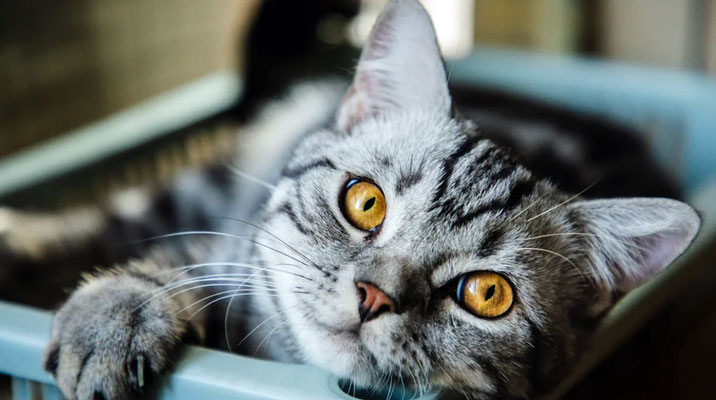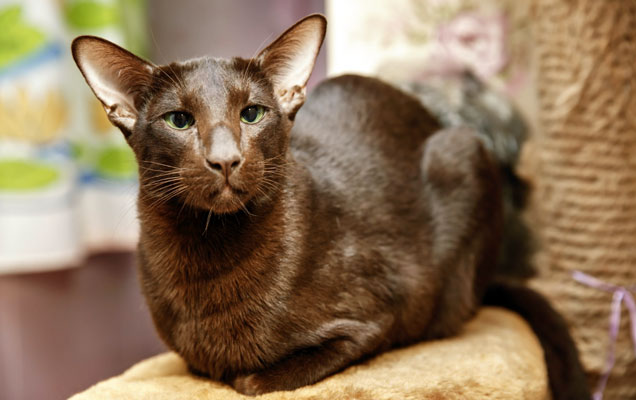Choosing the right kitten involves much more than selecting the cutest face. Each cat breed has unique behavioral, physical, and emotional traits that greatly influence how well it fits into a particular household. Two strikingly different breeds that often appeal to cat lovers are the Siberian cat and the Oriental Shorthair. While both are highly intelligent and engaging, they differ in coat type, personality, grooming needs, and energy levels.
If you’ve found yourself browsing listings for a Siberian cat for sale or considering an oriental shorthair, it’s important to understand exactly what these breeds offer. This article will guide you through their major differences and help you decide which breed is more compatible with your home and lifestyle.
Origins and history
The Siberian cat is a natural breed that hails from the forests of Russia. Its roots trace back centuries, where it evolved to survive the harsh climate, developing a thick triple-layered coat and a robust physique. This breed has long been cherished in Russian folklore and officially gained international recognition in the 1990s. Despite its majestic appearance, the Siberian is a playful and affectionate companion.
In contrast, the Oriental Shorthair was developed in the mid-20th century by crossing Siamese cats with various shorthaired breeds to create a sleek, modern feline with a wide variety of coat colors and patterns. Though it shares the Siamese’s body structure, the Oriental Shorthair has its own identity, standing out with its fine coat, large ears, and extroverted personality.
Physical appearance
The Siberian is medium to large in size, with a solid, muscular frame and a luxurious coat designed for cold weather. This coat, which comes in various colors and patterns, includes a dense undercoat, making it both water-resistant and insulating. The face is round, with expressive eyes, a broad head, and medium-sized ears.
On the other hand, the Oriental Shorthair is sleek, slender, and angular. With its long legs, whip-like tail, and wedge-shaped head, it looks like it stepped out of a fashion sketch. Its large, bat-like ears and almond-shaped eyes add to its exotic charm. The coat is short, glossy, and lies close to the body, showing off the Oriental’s lean build.
These dramatic differences in structure and coat not only affect aesthetics but also determine grooming and care requirements.
Personality and temperament
While both breeds are affectionate and intelligent, their approaches to human interaction are quite different.
Siberian cats are calm, gentle, and friendly. They enjoy being around people but are less likely to demand constant attention. They tend to bond deeply with their family and are typically easygoing, adapting well to children, other pets, and guests. These traits make them a popular breed among those who have an ESA certification as well. Siberians are known to be quiet yet curious observers, often joining in play or perching in high spots to monitor the home.
Oriental Shorthairs are lively, talkative, and extroverted. They crave interaction and will often follow their humans from room to room, voicing their opinions in a musical meow. These cats form intense bonds with their owners and are happiest when they are the center of attention. They are also incredibly playful and enjoy toys, puzzles, and games long into adulthood.

Grooming and maintenance
The grooming needs of these two breeds differ significantly due to their coats.
Siberian cats, with their dense triple coat, require regular brushing, especially during seasonal shedding times. While the coat resists tangles, it can still develop mats if neglected. Weekly brushing is usually sufficient for most of the year, but more frequent grooming may be necessary during spring and fall.
Oriental Shorthairs have one of the lowest-maintenance coats among cat breeds. Their short, fine fur sheds minimally and rarely tangles. Occasional brushing helps remove loose hair and keeps the coat shiny. These cats are perfect for owners who want a striking pet without significant grooming responsibilities.
Health and lifespan
Both breeds are generally healthy, but each has its own breed-specific concerns.
Siberian cats are robust and strong, with fewer known genetic health issues than many pedigreed cats. However, hypertrophic cardiomyopathy (HCM), a form of heart disease, has been observed in some lines. Responsible breeders will test for this condition.
Oriental Shorthairs may inherit health problems related to their Siamese ancestry, including progressive retinal atrophy (PRA), liver amyloidosis, and dental issues. They can also be prone to respiratory problems due to their narrow nasal passages.
When properly cared for, both breeds enjoy long lifespans — 12 to 16 years or more.
Comparison table: Siberian cat vs Oriental shorthair
| Feature | Siberian cat | Oriental shorthair |
| Origin | Russia (natural breed) | Developed in the USA/UK |
| Body type | Medium to large, muscular | Sleek, slender, elegant |
| Coat type | Long, dense triple coat | Short, fine, glossy |
| Grooming needs | Moderate to high | Very low |
| Shedding | Seasonal heavy shedder | Minimal |
| Personality | Gentle, quiet, affectionate | Talkative, energetic, demanding |
| Activity level | Moderate | High |
| Sociability | Friendly, but balanced | Extremely social and interactive |
| Good with kids/pets | Yes | Yes, but needs stimulation |
| Vocalization | Low to moderate | Very high |
| Health risks | HCM (heart condition) | PRA, respiratory and dental issues |
| Lifespan | 12–16 years | 12–15 years |
Which breed is right for you?
Choosing between a Siberian and an Oriental Shorthair largely comes down to lifestyle and personal preference.
If you want a more independent yet affectionate cat that doesn’t demand constant attention, the Siberian may be ideal. They’re low-key, beautiful, and love spending time near their humans without overwhelming them. They’re also an excellent choice for families, as they tend to get along well with children and other pets.
On the other hand, if you’re looking for a cat with a big personality, one that wants to be involved in everything you do, the Oriental Shorthair might be the perfect match. They thrive in busy, stimulating homes and love to “talk” to their people. However, they can become bored or anxious if left alone too long, so they do best in homes where someone is around much of the day or where other pets can provide company.
The Siberian cat and the Oriental Shorthair couldn’t be more different, and that’s a good thing. One is a fluffy, forest-bred charmer with quiet grace and loyalty, while the other is a sleek, vocal, high-energy companion full of sass and intelligence. Whether you’re scrolling through a Siberian cat listing or spotting an oriental shorthair for sale, knowing the core differences will help you choose a kitten that will thrive in your home.
Both breeds are wonderful in their own way, but they require different environments and owner personalities to flourish. Understanding these traits is key to a happy match, for both humans and felines alike.








